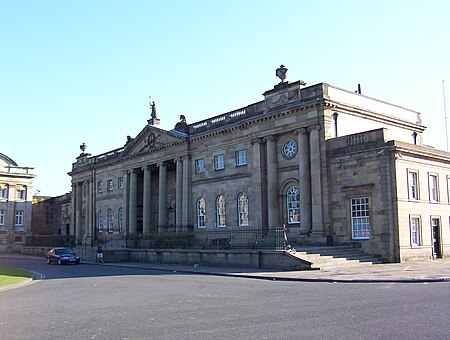York Crown Court
Buildings and structures in YorkCourt buildings in EnglandCrown Court buildingsGovernment buildings completed in 1777Grade I listed buildings in York ... and 1 more
Use British English from January 2023

York Crown Court is a Crown Court venue which deals with criminal cases at York Castle in York, England. It is a Grade I listed building.
Excerpt from the Wikipedia article York Crown Court (License: CC BY-SA 3.0, Authors, Images).York Crown Court
Tower Street, York Bishophill
Geographical coordinates (GPS) Address Nearby Places Show on map
Geographical coordinates (GPS)
| Latitude | Longitude |
|---|---|
| N 53.955 ° | E -1.0795 ° |
Address
York Crown Court
Tower Street
YO1 9WZ York, Bishophill
England, United Kingdom
Open on Google Maps










